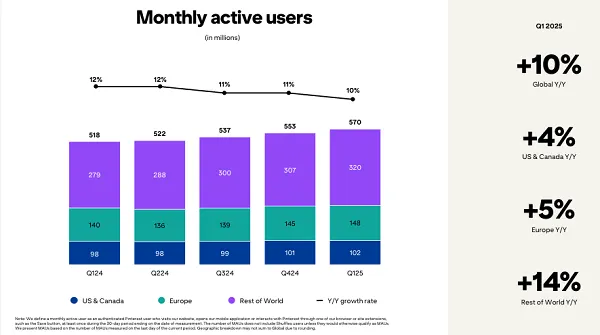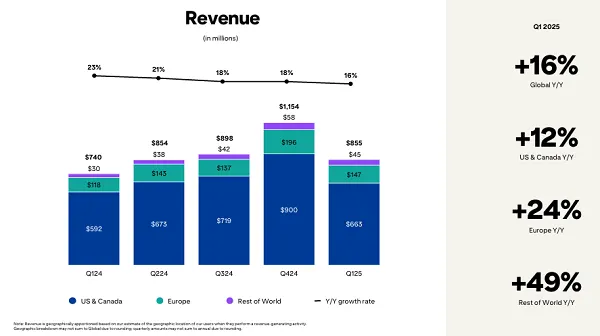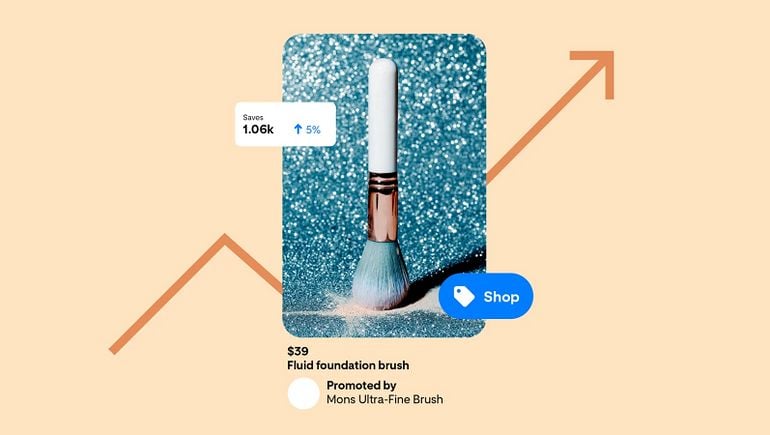Pinterest has shared its latest performance update, recording solid increases in both user and revenue in Q1 2025.
First off on users. Pinterest added 17 million more monthly actives in the period, taking it up to 570 million MAU.

As you can see in this chart, Pinterest has been steadily growing its user base, with Q1 seeing its biggest increase in users, in raw numbers, over the past five quarters. That growth has slowed slightly in comparative terms, but the numbers remain steady, showing that Pinterest is establishing a place as a key discovery platform for many users.
The only concern here is that Pinterest isn’t seeing big growth in its core revenue markets, in the U.S. and EU, which both saw less relative growth in the period. Pinterest has being gaining ground in Japan, while India is also a growth market, but it hasn’t yet established these as strong revenue drivers as yet.
Pinterest also notes that Gen Z remains the platform’s largest and fastest-growing cohort. For a long time, Pinterest struggled to gain traction with younger users, but as social media natives have aged-up, and Pinterest has updated its discovery tools, it’s now become a valued resource for many shoppers.
In terms of revenue, Pinterest brought in $855 million in Q1, up 16% year-over-year.

That’s a good level of growth compared to Q1 last year, though again, I would note that Pinterest needs to expand its ad business in other markets to capitalize on its usage.
On that front, Pinterest has also announced a new partnership with adtech firm Magnite to help expand its ad opportunities. Magnite will give Pinterest connection with more brands, and will ensure wider take-up of Pin ads.
Pinterest says that its AI elements, including its Performance+ ads, and in-stream discovery tools, have helped it improve the user experience.
As per Pinterest CEO Bill Ready:
“Our AI advancements are helping users take action and make more intentional shopping decisions. We’re driving performance for advertisers and winning market share, giving us a solid foundation for long-term, sustainable growth.”
Interestingly, Pinterest also notes that it’s seeing more interest from financial services marketers, which reflects expanding interest in the platform, and its various presentation options.
Overall, it’s a solid report card, which shows that Pinterest is increasing its relevance for marketers, while also exploring new opportunities. As with most platforms, its reliance on the U.S. and EU remains a concern (especially given that some 80% of Pinterest users are outside the U.S.), but Pinterest is doing more to activate this, and ensure that it’s capitalizing on its opportunities.













